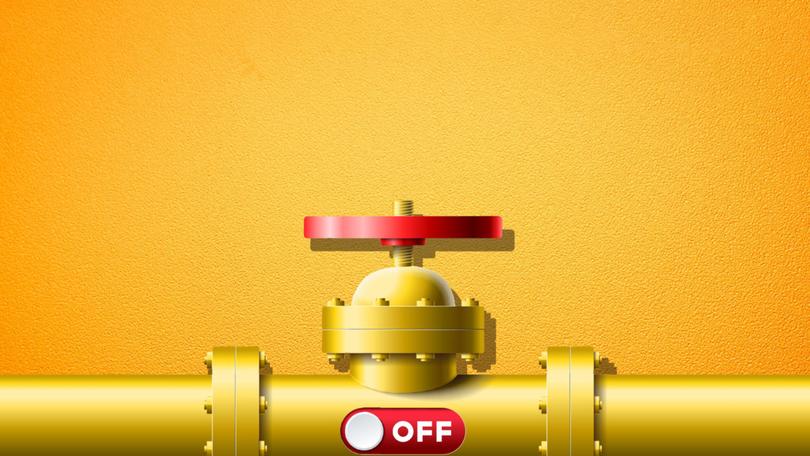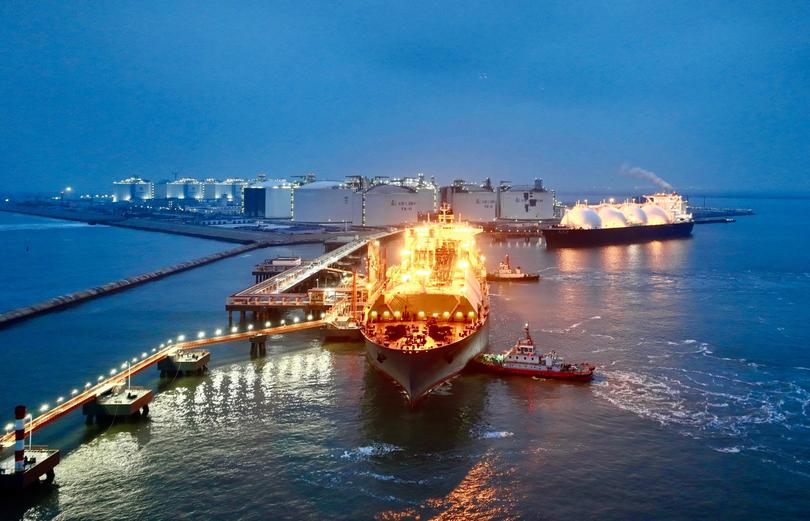THE ECONOMIST: Is the world sleepwalking into another gas crisis?

Gastech, a recent gas-industry jamboree in Houston, was full of enthusiasm. Amid a blizzard of deals by energy ministers and fossil-fuel giants, delegates cheered: their product is set for a starring role in the green transition. Yet there was uncertainty, too.
Opprobrium was heaped on President Joe Biden, who has paused permits for American export terminals of liquefied natural gas (LNG).
Insiders also worry that the global LNG market, which became vital to Europe and Asia after the war in Ukraine began, could soon face its first true test. With demand rising and supply failing to come on stream, a new scramble for gas could be in the offing.
Sign up to The Nightly's newsletters.
Get the first look at the digital newspaper, curated daily stories and breaking headlines delivered to your inbox.
By continuing you agree to our Terms and Privacy Policy.During the worst of the energy crisis, it looked as if 2025 would be the year of salvation. Russia had shut pipelines that supplied more than 40 per cent of European gas; if the continent survived two winters, the thinking went, then it would be out of trouble, as big LNG projects in America and Qatar flooded the market.
In fact, Europe did better than survive. It is approaching its third winter since war struck with gas-storage facilities 94 per cent full, ahead of its aim for them to be 90 per cent full by November.
Vast purchases of LNG, which last year accounted for 60 per cent of the bloc’s gas imports, have helped achieve this.
Instead, however, the market has turned fretful. LNG prices in Asia, the global benchmark, hover above $US13 per million British thermal units (mBtu), higher than at almost any time bar the 2022 panic.
One concern is a looming drop in temperatures. The northern hemisphere’s past two winters have been mild, but the coming one is unlikely to be so clement.
“Just a normal winter would feel very cold by recent standards,” notes a gas trader. A frigid season would be doubly bad for Europe. It would require more gas not just for heating but also for power: cold weather tends to come with a lacklustre breeze, hampering wind farms. North-east Asia should also be colder than in recent winters.
An extreme season like that of 2021 — when Beijing endured -20°C temperatures in January, its coldest in 50 years—is always possible.
Sindre Knutsson of Rystad Energy, a consultancy, reckons that a big chill in Europe and Asia would create extra demand for gas of 21 billion cubic metres (bcm) and 15 bcm respectively, or 4-8 per cent of the regions’ imports last year.
Since Europe is maxing out piped imports—and Asia, aside from China, has negligible piped trade — the remaining amount would need to come from seaborne shipments.
That could create demand for an additional 26 million tonnes of LNG, equivalent to 7 per cent of globally traded volumes last year.
The second worry is that Europe’s piped imports could fall further. Under a five-year deal due to expire in December, Russia still sends gas via Ukraine to central Europe. These flows have fallen by more than half since 2021, but still accounted for 15 bcm last year. Ukraine has already said it will not negotiate a new deal.
So Europe and Ukraine are discussing workarounds. The most realistic is a “swap” with Azerbaijan, whereby Russian gas coming through Ukraine would be relabelled as Azerbaijani while a portion of Azerbaijani gas would become Russian. Azerbaijan would then be free to buy that gas for itself or to pipe it to Turkey.
In this scenario Europe would, however, still be short of gas — it would receive as much via Ukraine as previously, but less from Azerbaijan.
Moreover, because energy is cheap in Azerbaijan, Russia would have to agree to sell to it cut-price, or Azerbaijan would have to pay over the odds. And Russia could still decide to stop deliveries of “Azerbaijani” gas to Europe any day. Talks are showing little evidence of progress.
Weather and geopolitics could therefore create demand for a lot of additional LNG cargoes, and do so at a time when the market will not be as flush as had once been anticipated.
Russia’s flagship Arctic LNG 2 terminal, initially due to export up to 13m tonnes per annum (mtpa) of LNG by next year — equivalent when superchilled to 18 bcm of gas — is delayed and devoid of clients after America slapped sanctions on the project and any vessel that docks there. A plan for Egypt to become a reliable LNG supplier to Europe has crumbled. The country’s gas output is tailing off much faster than expected.

Yet America has been the biggest disappointment. Mr Biden’s moratorium will be a blow to supply, but only in a few years, since it applies solely to new projects.
America’s immediate headache is the bankruptcy of the lead contractor on Texas’s Golden Pass project, one of two big terminals meant to come online next year, which could cause delays of six months or more. Alongside hiccups at smaller projects, this means that out of the 25-30 mtpa of new capacity expected by 2025, only 15 mtpa may materialise.
What would a perfect storm look like?
The worst-case scenario would include sub-zero temperatures in Europe as soon as early December and Russian gas vanishing by January 1. The continent would not run out of fuel in the short run: in addition to record stocks, it has an abundance of nuclear power (many French reactors, shut in 2022, are back in action) and hydro power (after biblical rains).
But it would see its gas reserves drained much faster, leading to the first big restocking exercise since 2022. This time Europe’s appetite would be even bigger: having expanded its regasification capacity by one-fifth, it is less constrained in its shopping ambitions.
Europe would have to compete with Asia for LNG cargoes, buoying spot prices. Anne-Sophie Corbeau of Columbia University reckons they could easily reach $US16 per mbtu early in the year. Richer Asian countries and China would be largely cushioned, because they buy much of their LNG under long-term contracts that are indexed to the oil price.
Yet nearly all Europe’s purchases are either made on the spot market or indexed to spot prices, and the continent cannot live without gas, having retired most of its coal-power plants. Governments, utilities or consumers — or a mixture of all three — would have no choice but to bear the higher cost.
Poor, populous emerging economies may not be able to afford it at all. Drawn by lower prices since last year, a few have recently returned to the market, or even imported LNG for the first time.
A price spike would surely put an abrupt end to this development. Many would be forced to switch back to coal; some may be forced into rolling blackouts. The wait for fresh supplies could be a long one.
